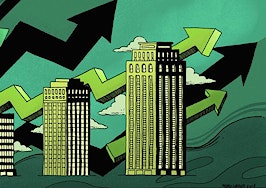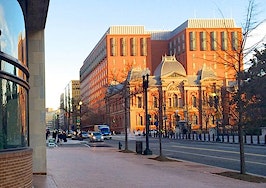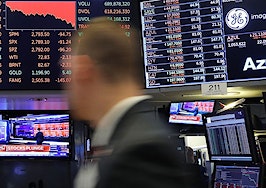The Trump Administration proposed new guidelines Friday that would create tax incentives for developers to build in so-called “Opportunity Zones.” The zones, created by the administration in 2017, were designed to act as a harbinger of investment in distressed communities.
“We want all Americans to experience the dynamic opportunities being generated by President Trump’s economic policies,” Treasury Secretary Steven Mnuchin said, in a release. “We anticipate that $100 billion in private capital will be dedicated towards creating jobs and economic development in Opportunity Zones.”
The regulations released Friday by the U.S. Department of the Treasury and Internal Revenue Service, clarify specifics about the plan, including the parameters for receiving funds, which taxpayers and investments are eligible and what gains qualify for deferral.
Investor benefits include deferral of tax on prior gains until as late as 2026 if the money is invested back into an Opportunity Fund — the name for the investment vehicle used to put money into the zone — and tax forgiveness on gains on that investment if it’s held for at least 10 years. And while Opportunity Zones only retain their designation for 10 years, investors can hold their investments in qualified opportunity funds through 2047 without losing the tax benefits.
The proposed regulations also say that builders retain those benefits as long as just 70 percent of the building is in the Opportunity Zone.
“This incentive will foster economic revitalization and promote sustainable economic growth, which was a major goal of the Tax Cuts and Jobs Act,” Mnuchin added.
In 2017, the administration identified 8,761 communities in the United States and five U.S. territories as Opportunity Zones. An estimated 35 million Americans live in these areas and based on data from the 2011-15 American Community Survey, the designated regions had an average poverty rate over 32 percent, compared to the 17 percent national average.
A common criticism of the Opportunity Zone strategy is that it could be used to benefit already gentrifying neighborhoods, according to a February analysis by the Washington D.C. think-tank Brookings Institute.
“The design of Opportunity Zones might encourage pressure on states to maximize tax benefits to their citizens – including their developers – to select gentrifying neighborhoods rather than the most distressed neighborhoods,” Adam Looney, the director of the Center on Regulation and Markets, wrote. “Already-gentrifying areas are guaranteed to have large capital gains.”
“Selecting those areas would maximize the tax savings to investors who would otherwise face large tax bills down the road,” Looney added. “In contrast, the benefit for investing in moribund or deeply impoverished areas where rents and property values are stagnant is speculative.”













